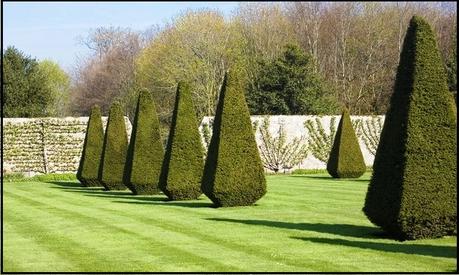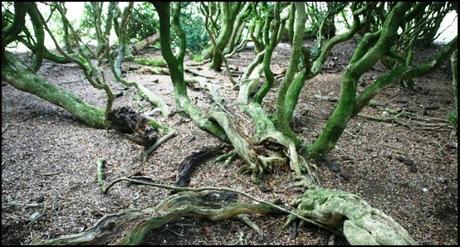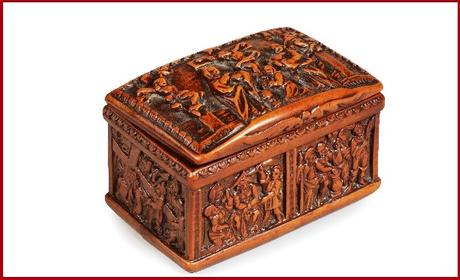There's nothing like a bit of etymology to set the scene. Box has various definitions, both as a noun and a verb, among which precedence should probably be given to this one: a variety of shrub or tree. Box is commonly found in ornamental gardens and is often grown as a hedge or a manicured topiary bush - see exhibit A:

The word derives (you guessed it) from the Greek pyxos (πύξος) originally meaning boxwood which, filtered in turn through Latin, became buxus and eventually box in English.
One can sensibly assume that back in the faraway golden-olden times, when most everyday boxes were made of wood (pre-cardboard and plastic, cheaper than metal), it was quite probable that boxwood was the best wood for the purpose and that the finished article came naturally to assume the name of the material it was most commonly fashioned from - in the same way that tins are made of tin (or were, for the most part, back in the not quite so far away et ceteras).
And just in case you think it unlikely that boxes could be made from the sort of ornamental shrubbery illustrated above, these are modern cultivars of the plant. It is better to take a look at a proper box wood, such as was common all across Europe at one time - see exhibit B:

the wild box woods of Ashridge
Those box trees happen to be in Ashridge woods, close to where I used to live in the merry shire of Herts before moving up to Blackpool, but there were and are similar to be found in Greece, where the next scene of today's blog is set.Haidariou was originally a Greek army barracks in the Athens region, but during the Axis occupation of Greece during the second world war, the Germans turned it into a concentration camp to house a mix of Greek prisoners of war, intellectuals, communist agitators, persons of 'dubious' ethnicity. It came to be known as the 'bastille' of Greece.
This latest product of the imaginarium supposes that some of those internees, as was often the case with POWs, turned their hand to the creation of little artefacts to help pass the time and keep themselves sane, using such rudimentary materials as they could get hold of - a bit of old boxwood, a sharpened nail. The results were often breath-takingly beautiful given the rudimentary tools and the unpromising working conditions - see exhibit C:

a box carved from boxwood
And so, to finish, a poem inspired by the foregoing research and musings...though it may need a little reworking and polish after the event.Box To Box
Red-rimmed Greek eyes stereo-reflecting
a barred Hellenic moon above Haidariou;
by this dim light in a sweatbox of a cell
his scarred hands whittle away
precocious nighttime hours
working intently on a piece of wood,
back turned protective to the door,
ears listening hard as any cunning beast
for the prowl of a predator.
Righteous anger supremely funnelled
into fettling with a metal pin
directs his artistry,
maintains his sanity
and keeps despair at bay
through painstaking transformation
of what is hidden from the guards by day
into a statement of defiance, of victory.
In a process not to be rushed,
a work of beauty that's symbolic
of a spirited refusal to be crushed,
his re-making of a broken world -
this perfect hollowed cube
with miniature depictions
on each external side and lid -
the greatest triumphs of the ancient Greeks,
taught and retained as images from school.
Emerging from a throwaway piece
of seasoned box and many trying months,
there's Marathon and Salamis,
Chaeronea, Thermopylae and Aegospotam,
all testaments to the bravery
and cunning of his race,
achieved by working with the grain
and trusting in the fates.
I hope you like that. Thanks for reading, Steve ;-) Email ThisBlogThis!Share to TwitterShare to Facebook
Reactions:
